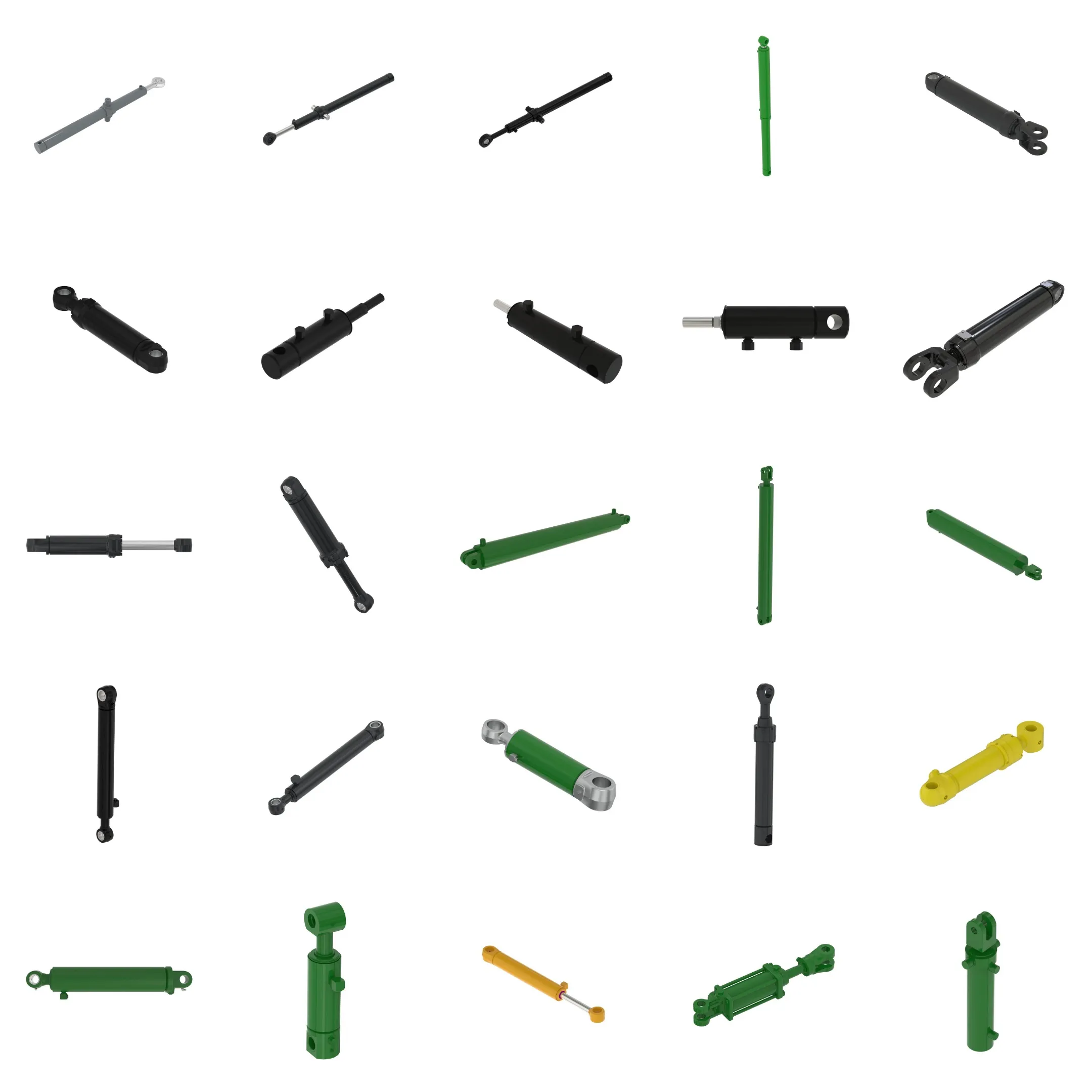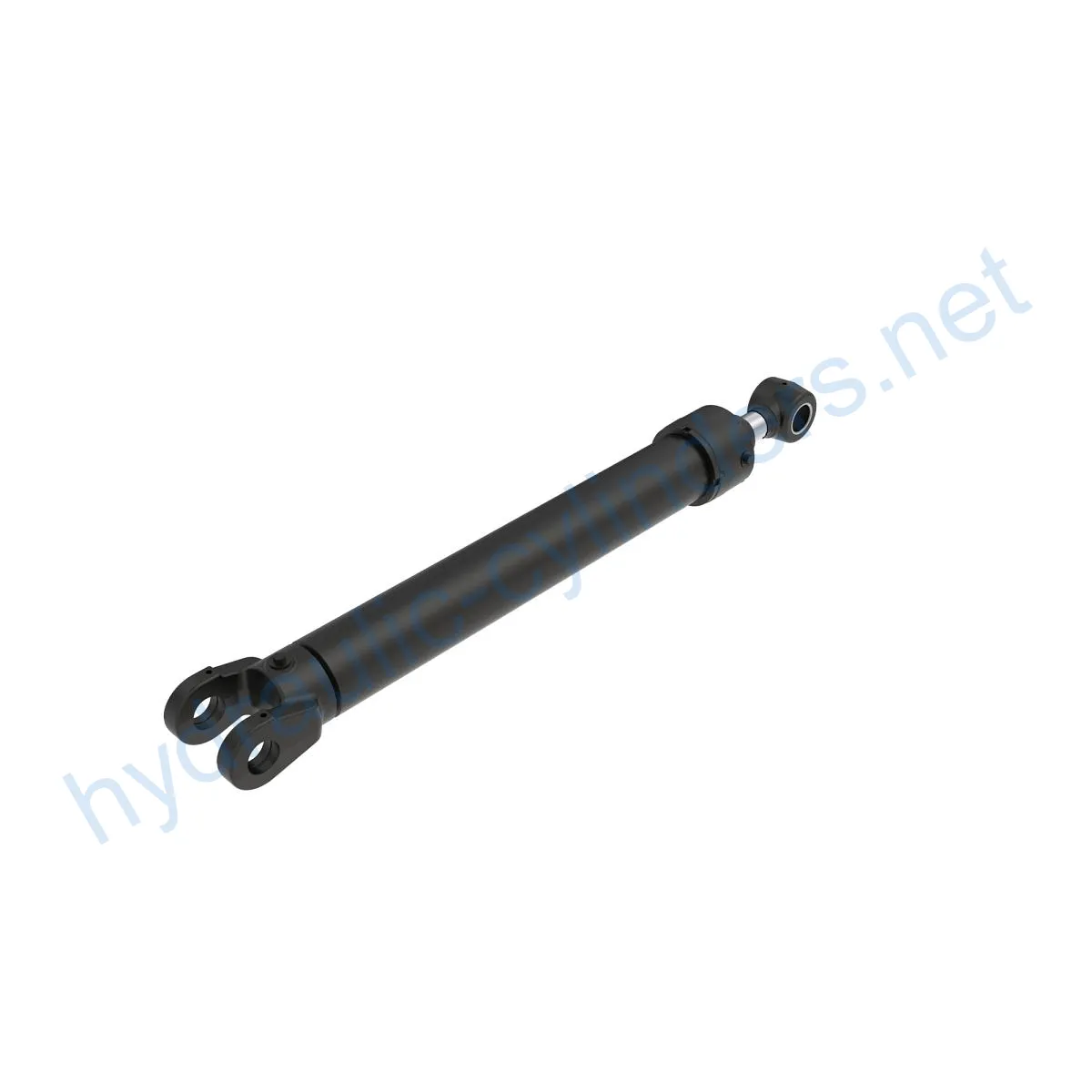Replacement Of AHC20087 Hydraulic Cylinder
Mint a hidraulikus hengerek egyik gyártója, szállítója és exportőre a mechanikai termékek, kínálunk hidraulikus hengerek és sok más termék.
Kérjük, lépjen kapcsolatba velünk a részletekért.
Posta:sales@hydraulic-cylinders.net
Hidraulikus hengerek gyártója, szállítója és exportőre.
Replacement Of AHC20087 Hydraulic Cylinder
The Replacement Of AHC20087 Hydraulic Cylinder is a crucial component for various industrial applications. This hydraulic cylinder is designed to provide reliable and efficient performance in a wide range of equipment. Its primary function is to generate linear force and motion, enabling the operation of machinery and equipment.
Specifications
- Weight: 225.473 lb
- Height: 13 in
- Width: 19.5 in
- Length: 58.5 in
Compatible Models
310 P
310K
310L
Key Features
- Improved Equipment Performance: Replacing damaged or worn hydraulic cylinders can restore the normal operation capability of equipment, ensuring optimal performance in various applications.
- Enhanced Safety: Regularly replacing hydraulic cylinders can reduce safety hazards caused by cylinder failures, ensuring the safety of both operators and equipment.
- Overload Protection: New cylinder designs often incorporate better overload protection mechanisms, enhancing overall safety.
- Quick Installation: Modern hydraulic cylinders are designed for easy installation and replacement, minimizing downtime.
- Standardized Components: Many hydraulic cylinders are standardized products, making it easier to obtain replacement parts in the market.
We specialize in manufacturing hydraulic cylinders that are perfect replacements for various models. Our products are designed to meet the highest quality standards and provide reliable performance.
Applications
- Excavators: Hydraulic cylinders on excavator arms or buckets may get damaged due to long-term use or overload, requiring replacement to restore normal operation.
- Cranes: Hydraulic cylinders on crane booms can wear out from frequent lifting and lowering, necessitating regular replacement to ensure safety.
- Tractors: Hydraulic cylinders on front-end loaders of tractors may develop leaks or performance issues during continuous lifting and tilting operations, requiring replacement.
- Harvesters: Hydraulic cylinders in harvesters endure high pressure during harvesting, and fatigue damage may occur, requiring timely replacement to maintain work efficiency.
- Automated Production Lines: Hydraulic cylinders are used to control robotic arms and other automated equipment. Cylinder failures can significantly impact production efficiency and should be replaced immediately.
- Die-casting Machines: Hydraulic cylinders in die-casting machines may experience reduced performance under high pressure and temperature. Regular replacement ensures product quality.
- Mining Equipment: Hydraulic cylinders are used for lifting and moving heavy loads in mining equipment. Due to harsh working environments, regular inspection and replacement are necessary to avoid equipment failures.
- Bulldozers: Hydraulic cylinder wear on bulldozer blades can lead to decreased pushing ability, requiring timely replacement to maintain operational efficiency.
Maintenance Tasks
- Regular Inspection: Periodically inspect the hydraulic cylinder for any signs of wear, leaks, or damage.
- Proper Lubrication: Ensure the cylinder is adequately lubricated with the recommended hydraulic oil to minimize friction and prevent premature wear.
- Seal Replacement and Calibration Check: Replace worn seals and regularly check the calibration to maintain optimal performance.
Proper installation, lubrication, and adjustment are crucial for the longevity of the hydraulic cylinder. During installation, provide guidance on aligning the cylinder correctly and recommend the use of suitable mounting brackets to secure the cylinder. We also offer inspection, repair, and replacement services to extend the lifespan of your hydraulic cylinder.
Safety Considerations and Environmental Factors
When using hydraulic cylinders, it is essential to prioritize safety measures. Proper handling and maintenance of the cylinders are crucial to prevent accidents and ensure a safe working environment. Regular inspection, appropriate lubrication, and seal replacement are vital for maintaining a safe and efficient hydraulic system. Additionally, environmental factors should be considered to ensure the cylinder’s performance is not compromised in extreme conditions.
Troubleshooting and Common Issues
It is important to be familiar with common hydraulic cylinder issues and their troubleshooting methods. Here are some common problems you may encounter:
- Leakage: Check for any leaks in the hydraulic cylinder and inspect the seals for damage. Replace worn-out seals to resolve the issue.
- Poor Performance: If the cylinder is not generating enough force or experiencing slow movement, check for insufficient lubrication, damaged components, or misalignment.
- Noise or Vibration: Unusual noise or vibration may indicate internal damage or misalignment. Inspect the cylinder for any visible issues and consult a professional if necessary.
For effective troubleshooting and problem-solving, refer to our troubleshooting guide. Implement preventive measures to minimize potential issues and ensure the reliable performance of the hydraulic cylinder.

Design Considerations and Selection Criteria
When selecting a hydraulic cylinder, it is crucial to consider various design factors to meet your specific requirements:
- Load Capacity: Ensure the cylinder’s load capacity matches the application’s demands to ensure safe and efficient operation.
- Sealing and Durability: Select cylinders with high-quality sealing components and durable construction to withstand demanding conditions.
- Safety: Opt for cylinders with built-in safety features, such as overload protection mechanisms, to prevent accidents.
- Maintainability: Consider cylinders with accessible components for ease of maintenance and repair, minimizing downtime.
Sealing and Lubrication
The hydraulic cylinder utilizes various sealing components, such as piston seals and rod seals, made from wear-resistant materials like polyurethane and nitrile rubber. The cylinder’s cylinder body and threaded end surfaces undergo fine processing to enhance wear resistance. Regular lubrication with the appropriate hydraulic oil is necessary to ensure smooth operation and prolong the cylinder’s lifespan.
Regular Inspection and Preventive Maintenance
To maintain optimal performance, regular inspection and preventive maintenance tasks are essential:
- Inspect the hydraulic cylinder for any signs of wear, leaks, or damage.
- Properly lubricate the cylinder with the recommended hydraulic oil to minimize friction and prevent premature wear.
- Check seals regularly and replace worn-out seals promptly to maintain proper sealing and prevent leakage.
- Perform calibration checks to ensure the cylinder operates within specified parameters.
Proper installation, lubrication, and adjustment are crucial for the longevity of the hydraulic cylinder. During installation, provide guidance on aligning the cylinder correctly and recommend the use of suitable mounting brackets to secure the cylinder. We also offer inspection, repair, and replacement services to extend the lifespan of your hydraulic cylinder.

About Our Company
We are a leading manufacturer and wholesale distributor of replacement
Take a Tour of Our VR Factory:
Take a tour of our VR factory with the following
Hydraulic Cylinder Application:


